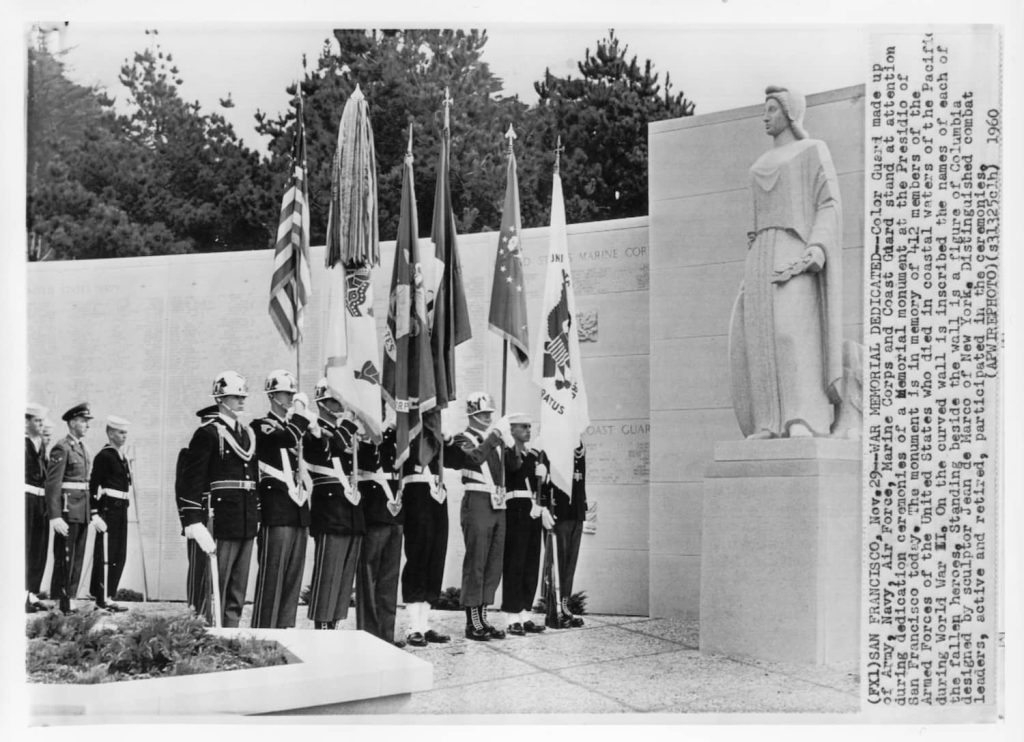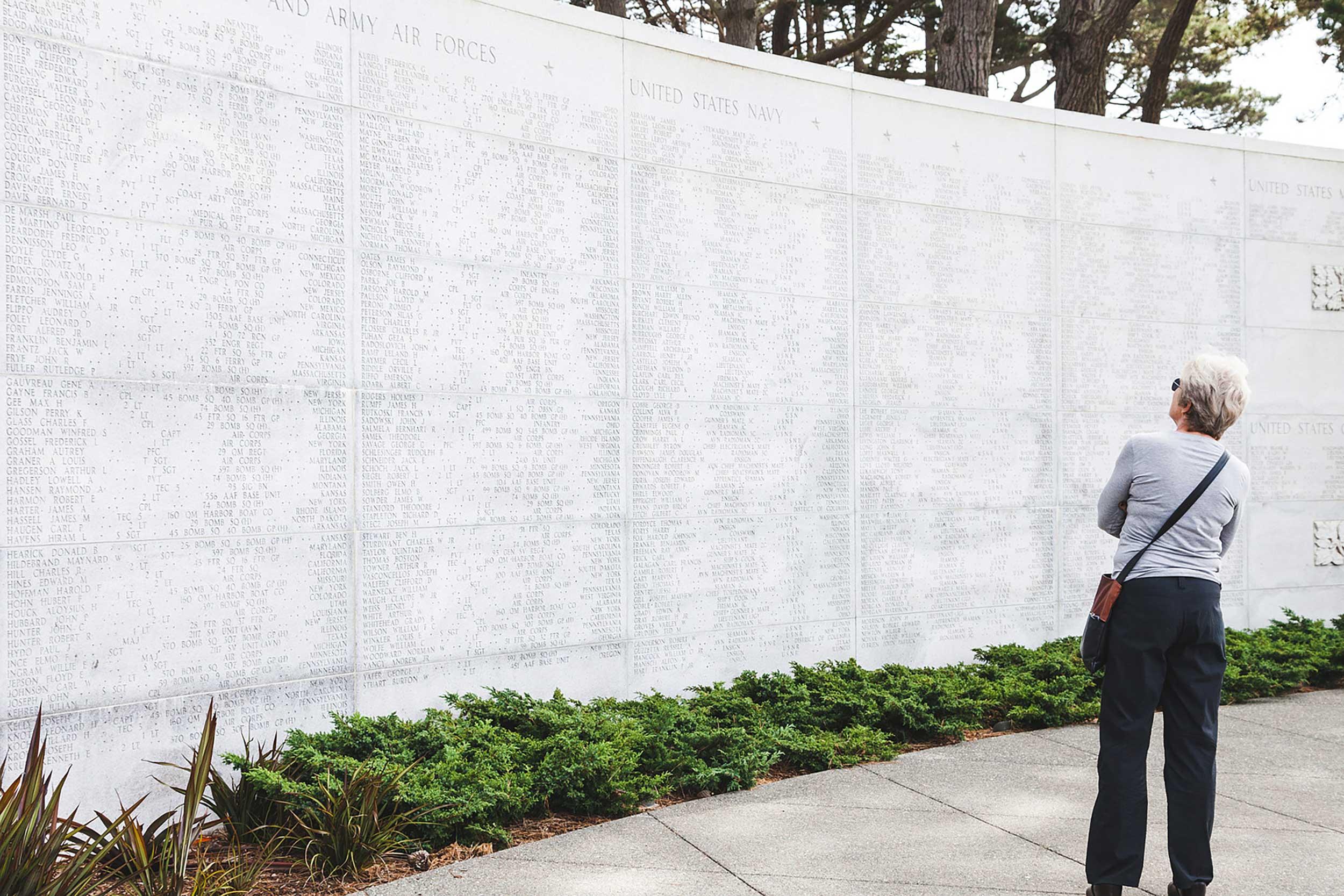World War II West Coast Memorial to the Missing
Pause at this beautiful memorial to honor servicemen lost at sea during World War II.
Located a short walk from Immigrant Point Overlook, this memorial is a site of profound beauty and remembrance.
Dedicated on November 29, 1960, it takes the form of a curved wall of California gray granite. Inscribed on its face are the names of 413 American soldiers, sailors, marines, coast guardsmen, and airmen lost or buried at sea while serving their country during World War II.
Set against a backdrop of Monterey pine and cypress trees, the site also features a bench and a statue of Columbia, a robed female figure who gazes out in tribute and reflection
Getting to World War II West Coast Memorial to the Missing
World War II West Coast Memorial, Washington Boulevard, San Francisco, CA
By Public Transit
Muni Route: 43 Masonic
Stop: Presidio Transit Center
Directions: From Presidio Transit Center, take the free Presidio GO Shuttle to Stop 8.
Muni Route: 29
Stop: Baker Beach
Directions: Walk north on the California Coastal Trail to reach the memorial.
WWII Memorial Parking
Limited free parking is available in a lot next to the memorial.
Why We Love World War II West Memorial to the Missing
Breathtaking views make this poignant memorial a top destination for those visiting the Presidio’s stunning Golden Gate Area. Here, you can remember that the Presidio was a place of service and sacrifice during its long history as a U.S. Army post.
Accessibility at the WWII Memorial
There is one spot for those with mobility limitations in a small parking lot next to the memorial. The memorial is easily accessed by taking the Presidio GO Shuttle South Hills Route, with busses that can each accommodate two wheelchairs. The plaza offers a bench for sitting.
Insider Tip
The Presidio is home to many memorials and monuments. Consider including others in your visit, like the Korean War Memorial or the Monument to the Unknown Soldier Dead, located inside San Francisco National Cemetery.
Honoring the Missing
History and Construction
Constructed at the behest of the American Battle Monuments Commission, this memorial was designed by San Francisco architects Hervey Parke Clark and John F. Beuttler and debuted in 1960. The late Bay Area landscape architect Lawrence Halprin, who later designed the meadow surrounding the Presidio’s Letterman Digital Arts Center created the beautifully tended surroundings.

Meet Columbia
Standing at one end of the memorial is the statue of a robed female figure. Forever staring out at the Pacific Ocean, this is Columbia, who was a common figure in political and wartime imagery through the end of World War I. Used to represent a female personification of America, by the 1920s, Columbia had largely been replaced by a new symbol: the Statue of Liberty. This iteration of Columbia would go on to earn the artist responsible, French sculptor Jean De Marco, a Henry Hering Memorial Award in 1965.
Hikes on Presidio Trails
The memorial is located near the intersection of the California Coastal Trail, the Juan Bautista de Anza National Historic Trail, and the Bay Area Ridge Trail, so it’s easy to continue exploring the Presidio in any direction.
Frequently Asked Questions
The nearest public restrooms can be found at the Golden Gate Bridge or at Baker Beach.
The closest option is the Roundhouse Café at the Golden Gate Bridge
